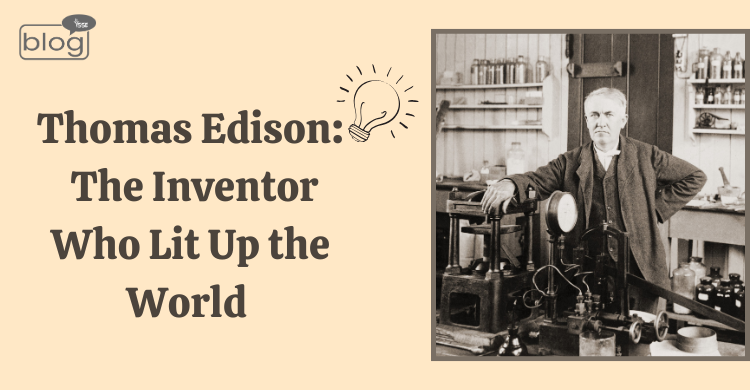Thomas Edison’s is an almost universally recognized name when it comes to inventors. He’s the fellow who gave us the light bulb, the phonograph, and a myriad of other things that made the contemporary world. But a legend of unyielding dedication, a sharp businessman’s instincts, and a ferocious appetite for knowledge underlies the image of the white-haired prodigy, one who fueled a career of invention.
Edison was born in 1847, and his childhood was no dream of scholarly success. He was a curious, high-strung child who would persist in asking “why?” until exasperated. He was deemed a slow learner, and his formal schooling was brief. His mother, a former schoolteacher, recognized his potential, however, and nurtured his inquiring mind at home. This early intervention was to be a turning point, the beginning of a lifelong regimen of self-education.
By age 12, Edison was a newsboy on the Grand Trunk Railway, and he had set up a small laboratory in a baggage car where he performed chemistry experiments. It was there that he began to develop his entrepreneurial talents, selling newspapers and candy to passengers. A turning point came when he saved a stationmaster’s son from a moving train, which earned him instruction in the use of the telegraph. This would be a valuable skill in his early life as an inventor.
Edison’s life as an inventor began in earnest in the 1860s. He had worked as a telegraph operator and then moved to Boston and later to New York City, where he developed his first important invention: the Universal Stock Printer. The device, which coordinated stock tickers in different locations, earned him $40,000—a small fortune at that time. With this financial boost, Edison established his first laboratory in Newark, New Jersey, and embarked on a series of inventions that would establish his reputation as a versatile inventor.
One of Edison’s most significant contributions was the development of the phonograph in 1877. The machine, which could record and play back sound, was a marvel of its time and won for Edison the nickname of “The Wizard of Menlo Park.” Although it had modest initial commercial success, the phonograph laid the foundation on which today’s recording and music industry is built.
Although the phonograph was groundbreaking, Edison’s most enduring image is one tied to his more utilitarian, practical incandescent light bulb. Edison himself did not invent the light bulb itself; he improved upon known models to introduce to the market a commercial, long-lasting version. In thousands of useless experiments and tens of thousands of test runs, Edison and his lab produced a carbon filament that burned for more than 1,200 hours. With the breakthrough achieved in October 1879, it opened an era.
Edison’s invention of the light bulb was merely a stepping stone toward a larger plan: the creation of an entire electrical power system. In 1882, he built the Pearl Street Station in New York City, the world’s first central power station. This development not only provided electric lighting for the masses but also paved the way for the mass adoption of electricity in businesses and homes.
The “Wizard of Menlo Park,” as he was later known, established his famous research lab in Menlo Park, New Jersey, in 1876. It was here that his most famous inventions were born. Edison’s approach was revolutionary. He did not just improvise; he experimented methodically, documenting his outcomes with great attention to detail. He believed invention was “one percent inspiration and ninety-nine percent perspiration,” a testament to his tireless work ethic.
While the incandescent light bulb is perhaps his most iconic invention, it was not his sole significant accomplishment. He revolutionized the way we listen to music with the phonograph, opened the door for the motion picture industry with the kinetoscope, and improved the telegraph and telephone technologies.
But Edison’s genius wasn’t limited to the laboratory. He was also a talented businessman, aware of the importance of patents and commercialization. He established numerous companies to mass-produce and market his inventions so that they would be utilized everywhere. He understood the power of branding and marketing, so his name became a household name.
Nevertheless, Edison’s past is not controversy-free. He was known to be highly competitive, sometimes engaging in patent wars and mudslinging against rivals. His battle with Nikola Tesla over alternating current and direct current is a case in point. Whereas Edison supported direct current, Tesla’s alternating current prevailed in the end, illustrating that even the greatest of inventors can sometimes be wrong.
Aside from these controversies, Edison’s contributions are definite. He did not just invent; he altered the path of our life. He lit up the darkness, voice to the voiceless, and motion to immobility. He demonstrated that with perseverance, experimentation was achievable, and an idea was turned into reality.
To read more blogs, click here.
Writer
Nayela Binte Azad
Intern, Content Writing Department
YSSE

